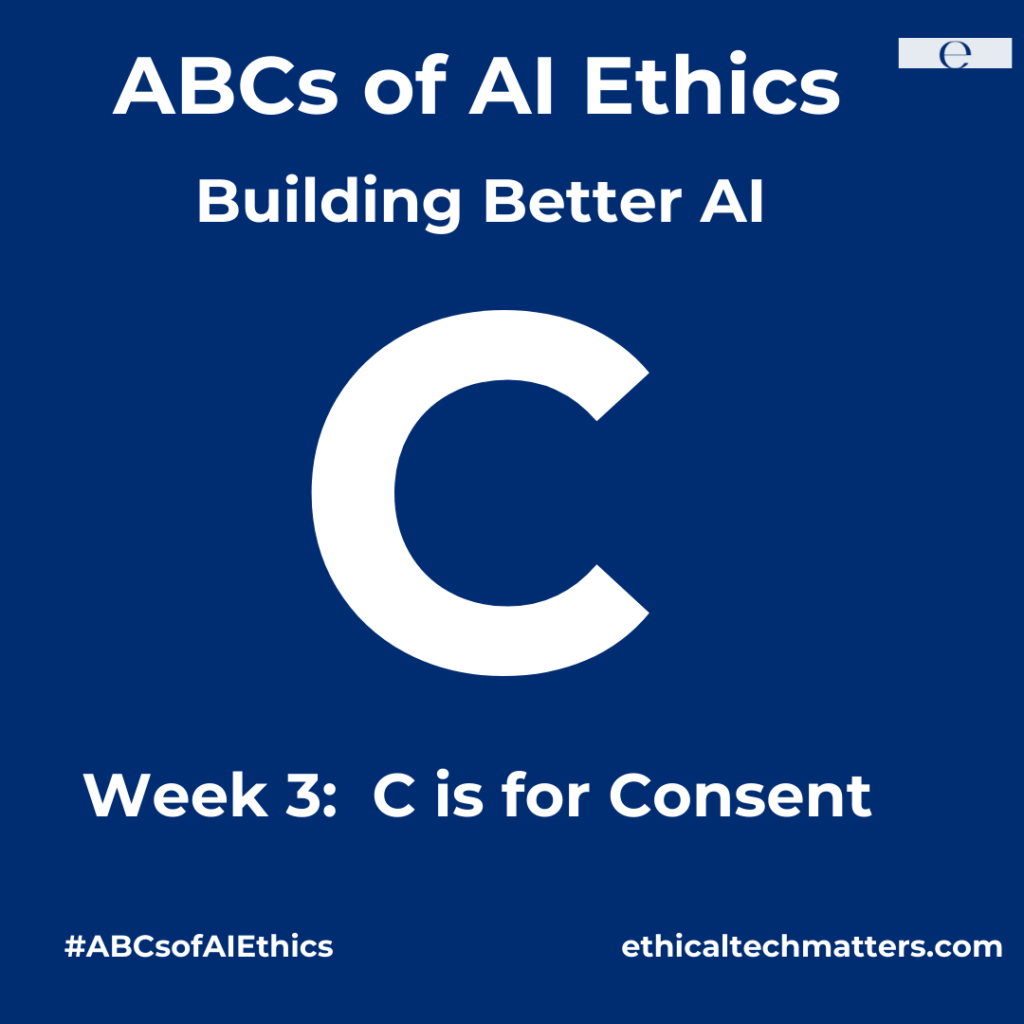Reading time: 7 minutes
Most organizations treat Artificial Intelligence (AI) consent as a legal formality – a checkbox to tick. After working with dozens of enterprise AI implementations, I’ve seen firsthand how this approach to informed consent fails users and ultimately undermines AI adoption and effectiveness. Jump to the implementation framework.
Why Traditional AI Consent Falls Short
According to Gartner’s 2023 AI Trust Study, only 28% of AI implementations meet all criteria for meaningful informed consent. This isn’t surprising. Traditional consent processes were designed for simpler digital systems, not the complex, adaptive AI solutions we’re building today.
“The future of AI consent lies in making complex systems understandable without oversimplification.” – Ethical Tech Matters Implementation Framework
Rethinking Consent for AI Systems
Our work with leading organizations has identified four essential elements that transform AI consent from a legal requirement into a trust-building advantage.
1. Purpose, Clarity & Value Communication
Stop hiding behind legal jargon. Users need to understand what data you’re collecting and how your AI system will deliver value to them. The Massachusetts Institute of Technology (MIT) research shows that organizations using clear, value-focused consent communications see 47% higher user engagement rates.
2. Risk Transparency & Control
Being upfront about AI limitations builds trust. Users should understand potential risks and have meaningful control over their AI system interactions. This isn’t just about transparency – it’s about empowerment.
3. Dynamic Data Rights
Static consent is dead. AI systems evolve, and your consent process should, too. Implement continuous permission validation and clear update communications. Make Data Rights Management as dynamic as your AI.
4. Proactive Withdrawal Systems
Don’t wait for users to figure out how to opt-out. Build withdrawal options that are as sophisticated as your AI implementation. This shows respect for user autonomy and builds long-term trust.
Making It Work: A Leader’s Guide to Informed Consent
Here’s what effective AI consent looks like in practice:
✓ Clear Communication
- Replace technical jargon with real-world impact explanations.
- Show, don’t tell – use scenarios and examples.
- Make complex concepts accessible without oversimplification.
✓ Meaningful Choices
- Offer granular control over AI interactions.
- Provide clear consequences for each choice.
- Enable progressive permission management.
✓ Verified Understanding
- Implement interactive consent experiences.
- Use feedback loops to improve clarity.
- Adapt to different user needs.
The Path Forward: Implementing Your AI Consent Framework
Start by asking these critical questions:
- Does your consent process match your AI’s sophistication?
- Can users quickly understand and control their AI interactions?
- How do you validate user comprehension?
- Need help? Get your free AI informed consent audit checklist.
Looking Ahead: The Future of AI Consent
As AI systems become more complex, consent processes must evolve. Organizations that master this challenge will meet compliance requirements and build the trust necessary for successful AI adoption.
Ready to transform your approach to AI consent?
1. Download our AI Consent Framework Template.
2. Schedule a free strategy session.
This post is part of our ABCs of AI Ethics series. Follow us on LinkedIn and Twitter for weekly insights on building better AI systems.
About the Author: As an AI ethics advisor to global organizations, I help leaders navigate the complex intersection of artificial intelligence and ethical responsibility. Book a consultation to learn how we can help your organization build trust through ethical AI practices.

